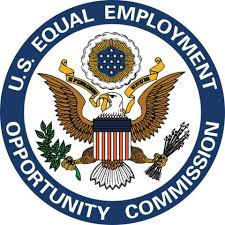
Little V. West
The U.S. Equal Employment Opportunity Commission (EEOC) recently issued its draft strategic plan for fiscal years (FY) 2018-2022. Because the strategic plan outlines the agency’s priorities for enforcing anti-discrimination laws in the upcoming years, employers can learn a great deal about the types of discrimination and class actions the EEOC will pursue and litigate to further its agenda. Let’s look at highlights of the draft plan to see where the EEOC intends to focus its resources.
Substantive Area Priorities
In its draft strategic plan for upcoming years, the EEOC makes some changes to the substantive areas of law that encompasses its priorities for enforcement efforts. First, it adds two new priorities under the Emerging and Developing Issues area. The agency will look to address discriminatory practices against those who are Muslim or Sikh, or persons of Arab, Middle Eastern, or South Asia descent, particularly protecting members of these groups from backlash following tragic events in the U.S. and the rest of the world. The agency also will look to clarify the employment relationship and the application of anti-discrimination laws to the evolving employment relationships related to temporary workers, staffing agencies, independent contractors, and the on-demand economy (e.g., Uber, Airbnb, freelancers, and other economic models that do not have a traditional employment relationship).
Second, the priorities under the Americans with Disabilities Act will be narrowed to focus on qualification standards and inflexible leave policies that discriminate against individuals with disabilities.
Third, in the area of Immigrant, Migrant, and Other Vulnerable Workers, the EEOC will look to its district offices and the agency’s federal sector program to identify vulnerable workers and underserved communities in their area. For example, the EEOC states that some district offices may focus on employment discrimination against members of Native American tribes, where those groups have local issues of concern.
Fourth, the EEOC proposes to expand its priority on equal pay to go beyond discrimination based on sex, but to address compensation systems and practices that discrimination based on race, ethnicity, age, individuals with disabilities, and other protected groups. Consequently, addressing and remedying pay discrimination is intended to reach all workers, not just those paid differently because of their gender.
Fifth, the agency will focus on preserving access to the legal system and challenging practices that limit workers’ substantive rights or impede the EEOC’s investigative or enforcement efforts. In particular, the EEOC intends to focus on overly broad waivers and releases of claims. It will also target overly broad mandatory arbitration provisions. In addition, the agency looks to focus on significant retaliatory practices that dissuade other employees from exercising their rights.
Finally, the EEOC will continue to make it a priority to prevent systematic workplace harassment. Given the current environment that has shed new light on sexual harassment, the EEOC will look specifically to claims that raise a policy, practice, or pattern of harassment.
Strategy Leads to Priority Handling and Litigation
Because of limited resources, the EEOC will use its strategic priorities to guide its charge handling, investigations, and litigation. If a charge raises a substantive area priority, it will be given priority in charge handling. Cases with strong evidence in substantive priority areas will be given precedence in the selection of cases for litigation. In general, the agency looks to its strategic plan to offer a more targeted approach to its enforcement efforts.
Integrating EEOC Efforts Across The Agency
In addition to the substantive priority areas, the EEOC states that it is committed to using an integrated approach to consider ideas, strategies and best practices across the agency. It looks to reinforce consultation and collaboration between the investigative staff and the EEOC’s lawyers who litigate the cases. It also looks to increase the collaborative efforts between the federal and private sector staff, especially with respect to protecting LGBT workers. It also looks to enhance a coordinated and consistent nation message when it comes to education and outreach activities.
Next Steps
The EEOC accepted comments from interested parties on its draft strategic plan through January 8, 2018. The agency is expected to review submissions and approve its final version of the plan in the coming months.







